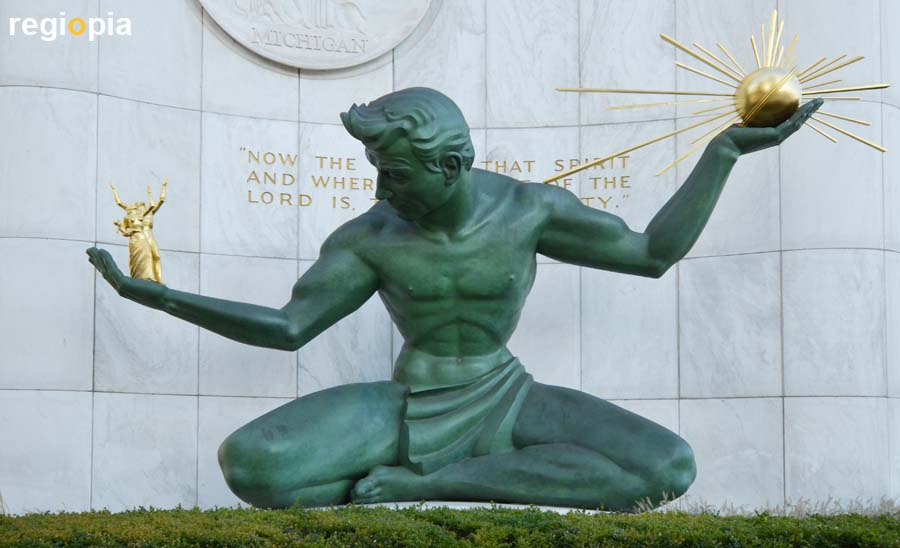
Spirit of Detroit
The most famous sight of Detroit is the "Spirit of Detroit" sculpture in front of the Municipal Center. The sculptor Marshall Fredricks created the artwork 1958, which soon became the symbol of Detroit. The statue holds a golden ball with sun rays in one hand, that represents God and in the other hand a man and a woman that symbolize humanity. The engraving behind the sculpture says: "Now the Lord is that Spirit. And where the Spirit of the Lord is, there is Liberty." Sometimes the sculpture is dressed in a local sports jersey.
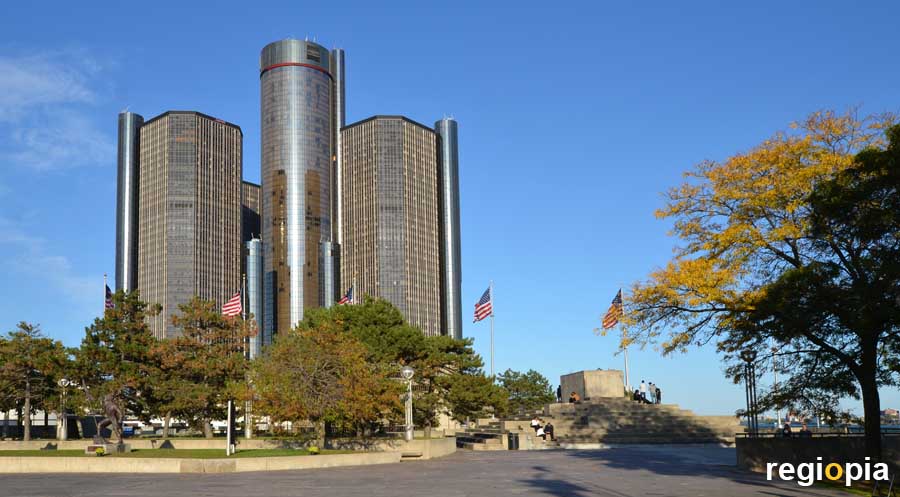
GM Renaissance Center
The Ford Motor Company built the Renaissance Center directly on the riverfront. The complex of seven high-rise buildings was constructed by architect John Portman between 1973 and 1981. The major construction project was to begin the Detroit renaissance. The city was already suffering from the auto manufacturers' crisis. The 220 m high central office tower became the tallest building in Detroit. In addition to office towers, a Marriott Group hotel was built. The Renaissance Center was bought by General Motors in 1996 and converted into the new company headquarters in 2001. The latest models of the car manufacturer are exhibited at the GM World inside the Renaissance Center.
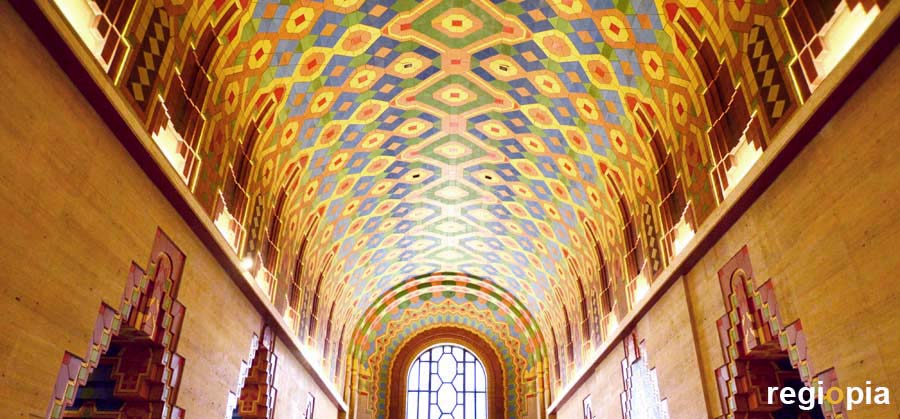
The Guardian Building
The finest Art Deco skyscraper in Detroit was built in 1929 for the Union Guardian Trust Company. The architect of the 151 m high tower was Wirt C. Rowland. The 40-storey skyscraper surpasses all other buildings in the city with its magnificent furnishings. The richly decorated entrance hall with colored diamond patterns is particularly impressive and is open to the public. From the outside, the Guardian Building is clad with reddish bricks that form a star-shaped crown at the top. The building was designated a National Historic Landmark by the National Park Service. The Guardian Building is considered the most beautiful skyscraper in Detroit. The Great Depression began after the Guardian was completed. It was also the last Art Deco skyscraper built in Detroit.
www.nps.gov/nr//travel/detroit
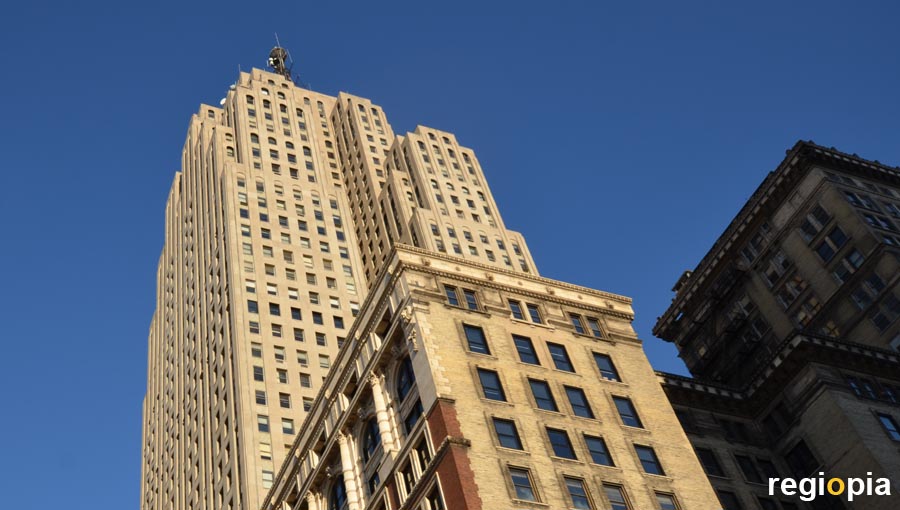
Penobscot Building
The Penobscot Building is one of the best known buildings in Detroit. It originated in the heyday of Detroit in 1928. The 172 m high skyscraper in Art Deco style was designed by Wirt C. Rowland. The Penobscot Building was the tallest skyscraper in Detroit until the construction of the Renaissance Center in 1977. The name Penobscot comes from a river in Maine, which was named after an Indian tribe. Client Simon J. Murphy used to work as a lumberjack on this river, before moving to Detroit and getting rich with his own timber trade. By choosing the name Penobscot he reminded of his roots at the east coast. Indian motifs by sculptor Corrado Parducci decorate the building.
www.historicdetroit.org/buildings
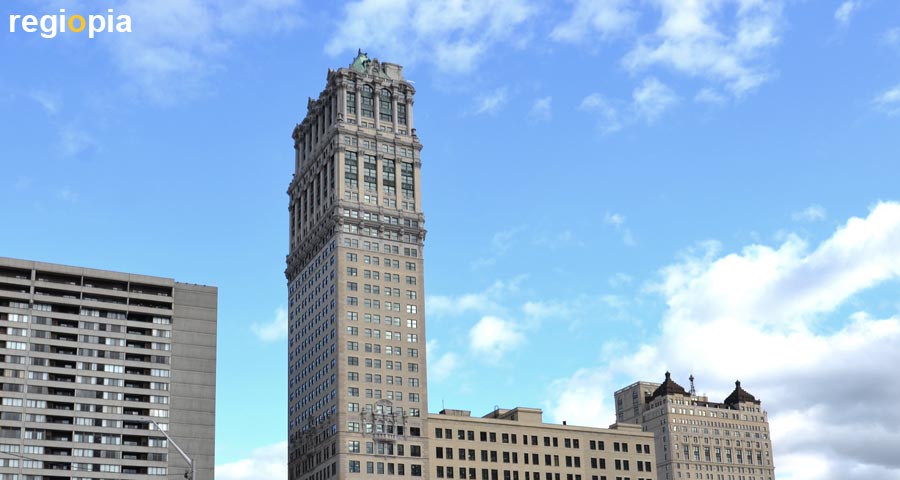
Book Tower
The three Book Brothers recognized early on that Detroit would become rich through the automotive industry and built hotels and office towers in the center of Detroit. When completed in 1926, the Book Tower was the tallest tower in Detroit with 145 m. However, it was surpassed in 1928 by the 170 m high Penobscot Building. The Book Tower was designed by the German architect Louis Kamper, who built numerous other buildings in Detroit. Kamper freely used architectural history and built neo-Gothic and neoclassical buildings. The Book Tower is a mixture of neo-renaissance and neoclassicism. The lower part of the skyscraper is kept rather simple, only in the upper third Kamper shows his decorative repertoire. After the oil crisis at the end of the 1970s, the Book Tower was empty and sold. Many attempts to revitalize the tower failed until the tower was finally renovated in 2019 and shows its bright facade again.
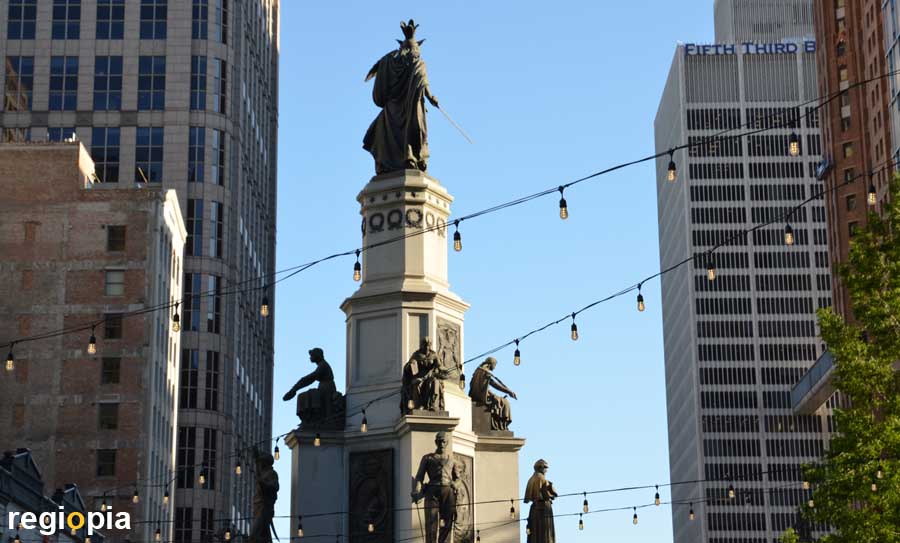
Cadillac Square
Cadillac Square is the main square in central Detroit. It was named after the city's founder, the Frenchman Antoine de la Mothe Cadillac. The square merges directly into the oval Campus Martius, which owes its name to the Martian field in Rome. On the Campus Martius stands the Michigan Soldiers and Sailors Monument, built in 1872 for the fighters in the American Civil War. The Campus Martius is also home to the Point of Origin, the starting point for all distance measurements within Detroit. In winter the square is used as an ice rink and in summer sand is piled up and a beach bar attracts visitors.
ads
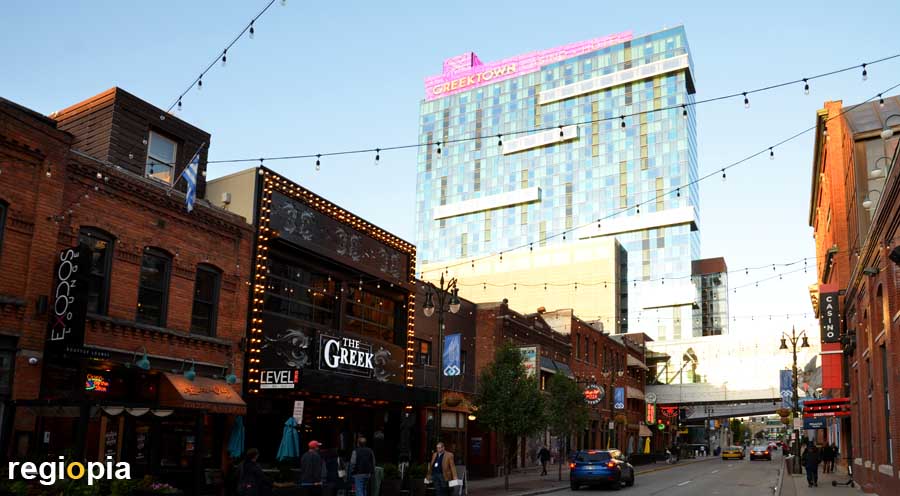
Greektown
The pub and entertainment district in central Detroit is called Greektown. Originally it was a German residential area, when the Germans left the center around 1900, people from Greece moved into the neighborhood. They opened shops and restaurants and turned the area into an inner-city quarter. In the 1960s, most Greeks moved on and only the shops and restaurants stayed. Fearing that Greektown would disappear, the business owners joined forces and oraganized a Greek Festival on the 4th of July (Independence Day). There were many visitors and Greektown was able to establish itself as a nightlife district. Today Greektown still has Greek restaurants but also other bars, casinos and shops.
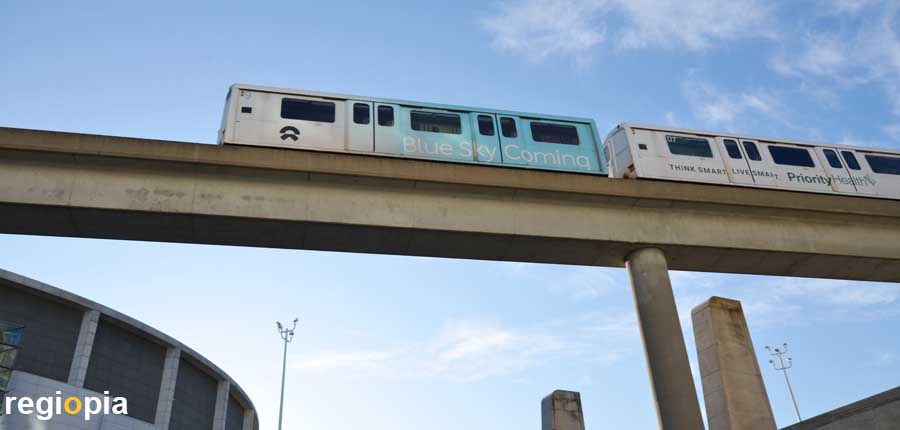
Detroit Peoplemover
The Detroit Peoplemover DPM is a loop train that surrounds the center of Detroit. The elevated train runs on stilts and stops at Greektown, the Renaissance Center, Grand Circus Park, Times Square, Cobo Center and other stations. A ride costs 0.75 cents (in 2019) and is therefore very cheap. However, the city center of Detroit is very small and you can also explore the city on foot. For tourists the trip with the Detroit Peoplemover is great, because you get better views of the city, than from street level.
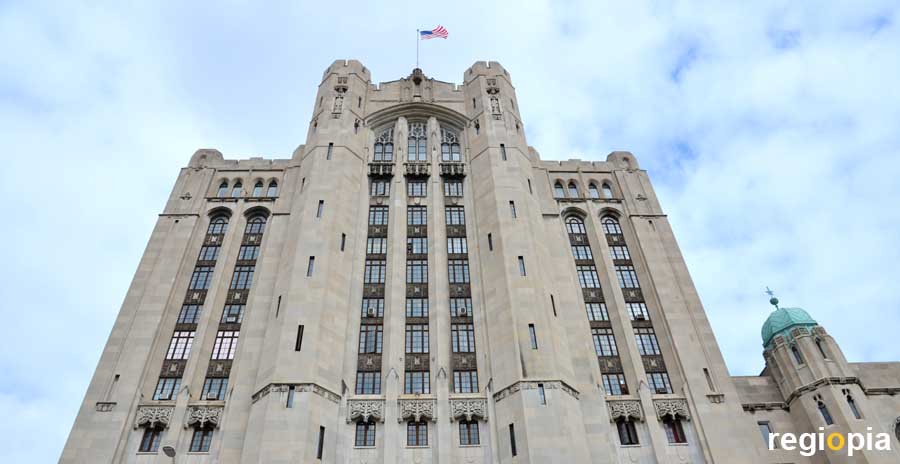
Masonic Temple
The building of architect George Mason was opened in 1926, it was by then the second biggest Masonic temple in the world. When Chicago's temple was demolished in 1939, the Detroit Masonic Temple became the biggest of its kind. On the outside the gothic-style building is a reminiscent of a cathedral. The more than 1,000 rooms are amaze with a variety of motifs. There are Ionian, Corinthian, Doric, Tudor and other rooms. The Masonic Temple is famous for its theaters, the largest has over 4,600 seats. If you're in Detroit, it's worth to study the Masonic Theater's program, there are always great performances or concerts going on.
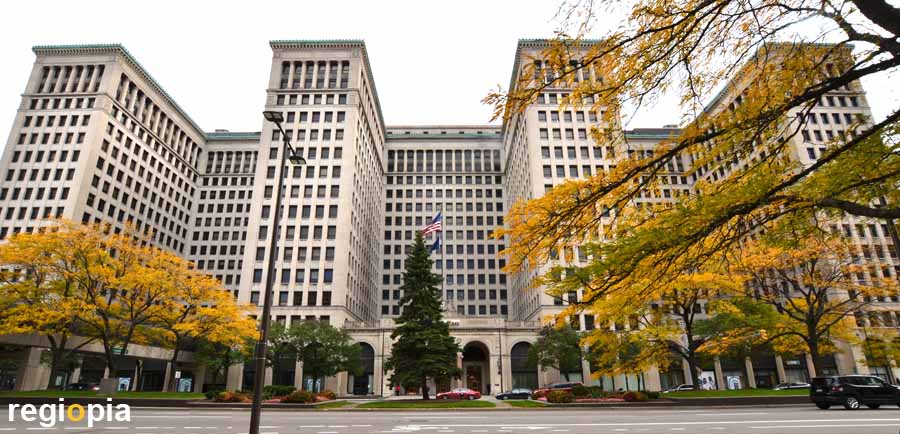
General Motors Building
The 67-foot General Motors Building, designed by the German emigrant Albert Kahn, served as the headquarters of the General Motors Company from 1922 to 1996. The gigantic office building, with a usable area of around 130,000 m² on 15 floors, consists of four office blocks that are connected by another central wing in the centre. The New Center of Detroit was built here along with the Fisher Building. In 2001, the automaker moved to the Renaissance Center on the Detroit River and GM's old company headquarters was empty. Today, the General Motors Building is used by the city of Detroit, which renamed the structure Cadillac Place after the city's French founder. At the same time, Cadillac is General Motors' luxury brand.
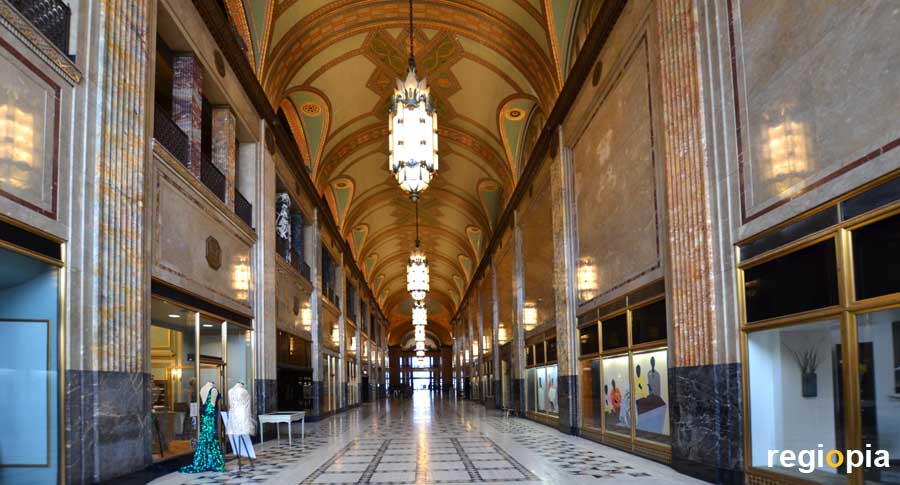
Fisher Building
The Fisher Building is a masterpiece of Art Deco architecture in America. Opened in 1928, it is the tallest skyscraper in Detroit's New Center with 130 meters. The Fisher Brothers made an incredible amount of money in the construction of car bodys and commissioned the famous architect Albert Kahn, with the request to build the most beautiful building in the world. Money did not matter. The architect designed a skyscraper with theater for more then 2,000 spectators and two shopping arcades. He used marble, granite and bronze windows. The two shopping arcades have the dimension of cathedrals and were designed by the Hungarian Géza Maróti. The Fisher Building attracted attention throughout America when it opened.
3011 W Grand Blvd, Detroit, MI 4820
ads
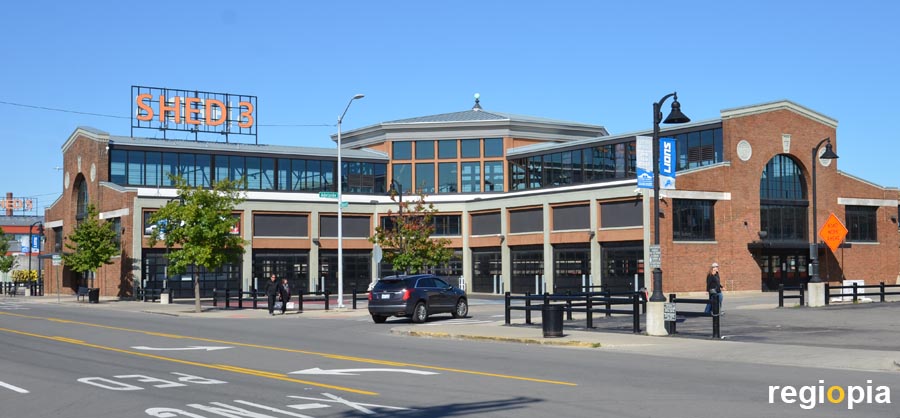
Detroit Eastern Market
The Eastern Market is a collection of market sheds that are partially covered. The market mainly sells food. The Eastern Market opens on Saturdays from 6am to 4pm (2019). In the summer there are other market days, on which the offer is extended to other products, such as design from Detroit. For opening hours and events check the link. The area around the Eastern Market is also known for great grafitti and murals. See also Picture Gallery of Detroit (in preparation).
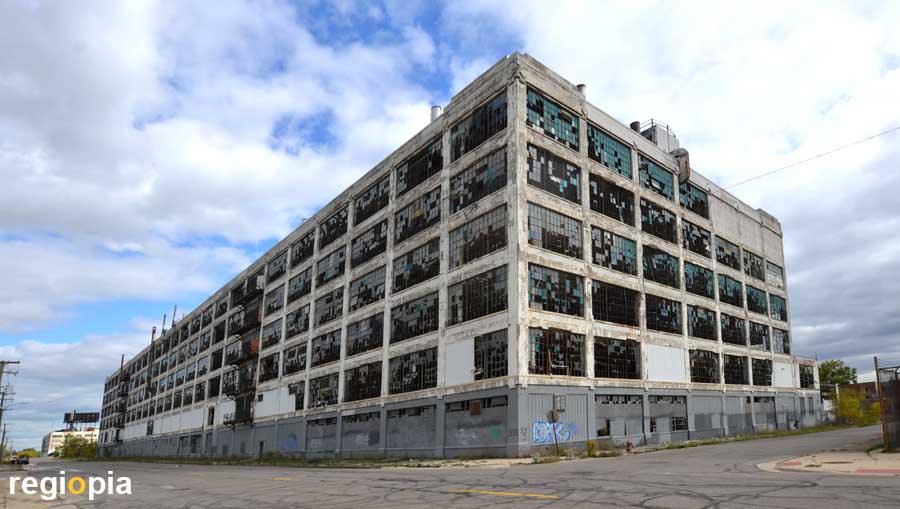
Ruins of Detroit
Although Detroit has clearly recovered in recent years, there are still many ruins in town. Empty factories still shape the image of some of the cities neighborhoods. At Piquette Avenue, the Ford Model T was produced. Here you can find out about automotive history in the Museum of the historic Piquette Plant. In sight of the museum is an abandoned production facility, the Fisher Body Plant 21 (photo). In Detroit ruins are demolished and on the formerly built up areas grass is growing. The transformation of Detroit is still on the move.
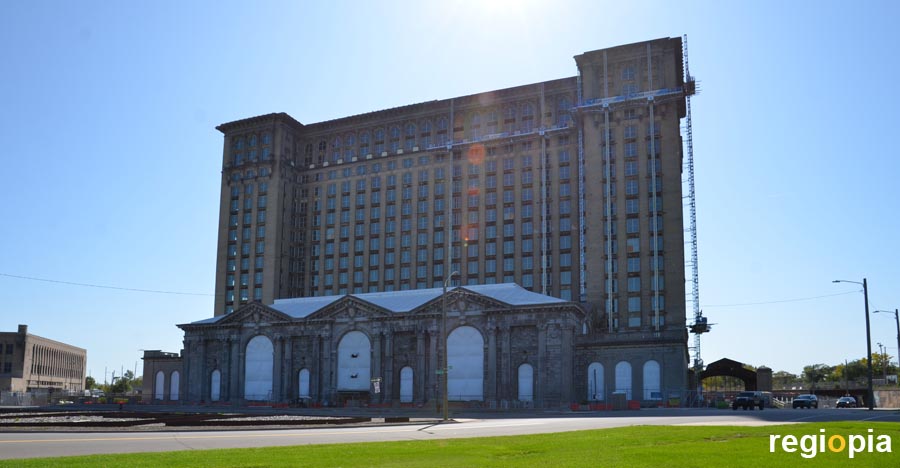
Michigan Central Station
To replace the old terminus station in central Detroit, land was bought in Corktown and a new station was built in 1914. Michigan Central Station was planned by the same architects as the New York Central Station. The architects Warren & Wetmore together with Reed & Stem built a train station with an 18-story high-rise building on top. As a result, the Michigan Central Station was considered the tallest station building in the world. But the new station was too far from the city center. The construction of highways and airports made rail travel increasingly unattractive. The railway traffic from Michigan Central Station was termineted in 1988, since then the station is abandoned. Because it is a listed building, it has not been demolished yet. There are always attempts to save the building by new concepts, but until now they all failed. The Michigan Central Station is a landmark of Detroit and will survive.
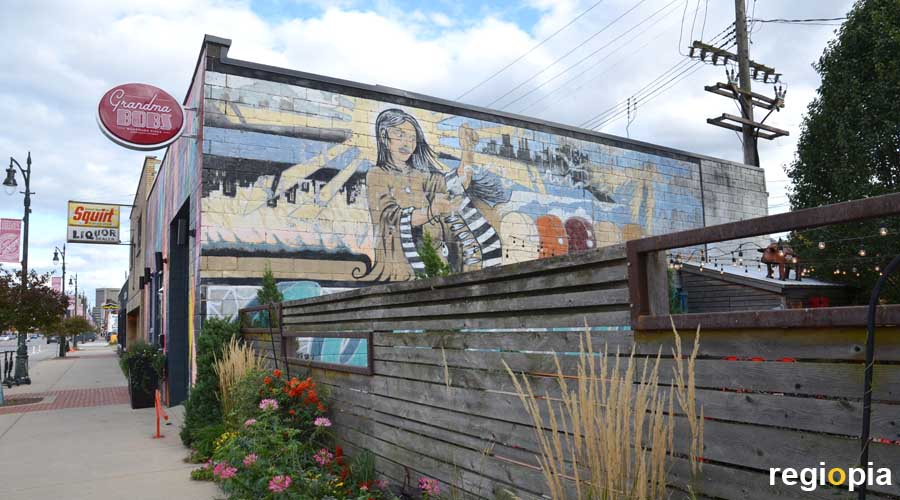
Corktown
Corktown is Detroit's most popular nightlife district. Irish immigrants from the city of Cork gave the ward it's name. Corktown is not as touristy as Greektown, hippsters and families from Detroit love this place. Good restaurants and bars in renovated old buildings, make the pleasant charm of the district. Courtyards with beer gardens show that Detroit can also be very cozy. Corktown is not very big and there are still gaps between the houses, but the neighborhood is one of the best places to eat or enjoy a night out in a bar.
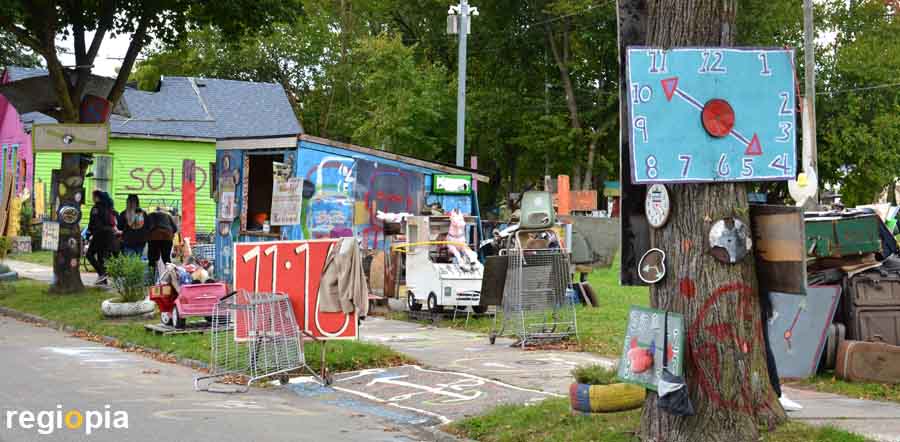
The Heidelberg Project
The Heidelberg Project was a reaction by artist Tyree Guyton to neglect and crime in his street. He cleared the neighborhood from 1986 onward and turned his Street into an art project. Remains of toys were piled up on burned-down houses, existing houses were painted colorfully and even the sidewalks got paint. The Heidelberg Project is a mixture of defiance and protest. It wants to show that you can change your neighborhood yourself, if you want.
Heidelberg Street looks like a mixture of funny weird village and sorted garbage on green meadows. A very bizarre place that tells a lot about Detroit.
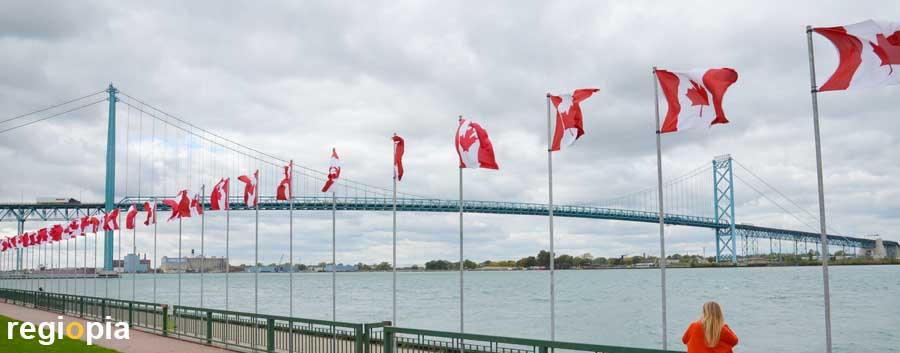
Ambassador Bridge
The Detroit River is the border between the USA and Canada. The Abbassador Bridge was built in 1929 and connects Detroit with the Canadian city of Windsor. The suspension bridge made of steel is around 2.3 kilometers long. Around 10,000 trucks and 4,000 cars drive over the bridge every day. For the crossing a toll of about US $ 5 or 6,25 CA $ has to be paid, for current costs check the link. On both sides there are border stations, where you have to answer questions why you want to enter the country. You should not drive over the line where the stop sign is. The humorless border guards may look very angry and the interview takes longer than necessary. He let us pass anyway, nice guy.
Another way to get to Canada is the Detroit-Windsor Tunnel, which opened in 1930. The tunnel connects Downtown Detroit with Downtown Windsor. The toll is a bit cheaper.
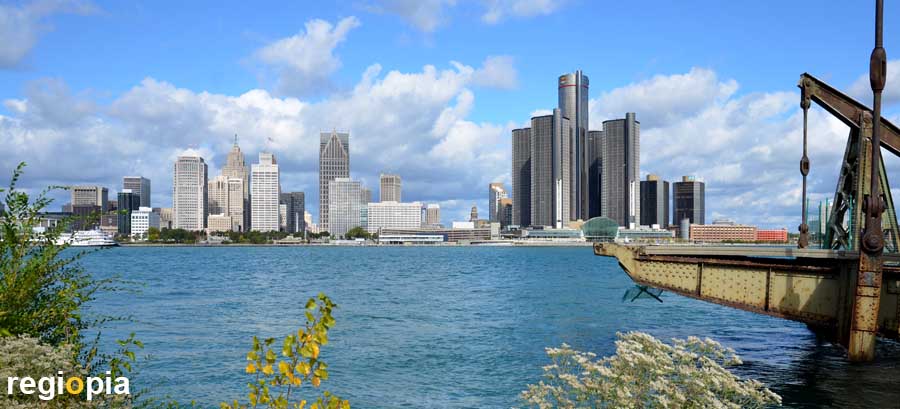
Detroit Skyline
One of Detroit's top attractions is the skyline seen from Windsor. The Canadian city is just across the Detroit River. From the Riverfront Promenade one has the best views on Downtown Detroit. At the river there is paid parking and a cafe. Apart from the skyline of Detroit, the town of Windsor has not much to offer, the main street Ouellette Ave. is even emptier than the streets of Detroit. If you still want to spend more time in Canada drive up to Toronto or visit the Art Gallery of Windsor. The best thing in Windsor is the Detroit skyline at night.
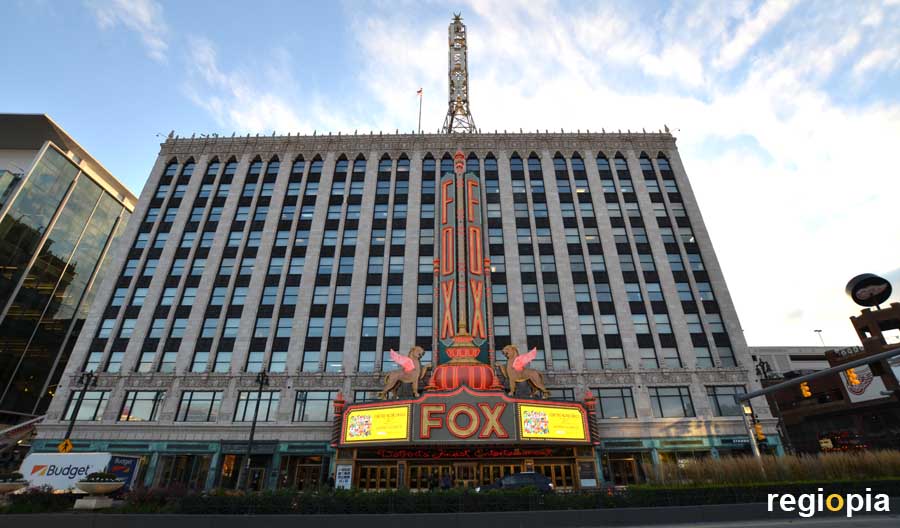
Fox Theatre
Another pinnacle of the heyday of Detroit is the famous Fox Theater. From the outside, the building is not extraordinary, but the auditorium is a decoration orgy unequaled. The Art Deco architecture shows motifs from China, Persia and India. With over 5,000 seats, the auditorium is the biggest theater in Detroit. The Fox Theater opened in 1928 as a movie theater. The architect Charles Howard Crane designed a theater with a ten-story office building on top. If you are in Detroit you should definitely visit the Fox Theater, the auditorium is really special. For events check the link.
www.313presents.com/venues-events/fox-theatre
Map Detroit Attractions
ads
Travel Guide Detroit
Welcome to Detroit
Even if Detroit makes a neglected impression, the city is recovering and many designers and artists move into the deserted ruins. Detroit is a very interesting city, with many beautiful buildings.
There is the "Belle Isle" in the Detroit River, with one of the oldest aquariums in the USA or the "Raven Lounge", the most famous blues club in Detroit.
ads
ads
ads


